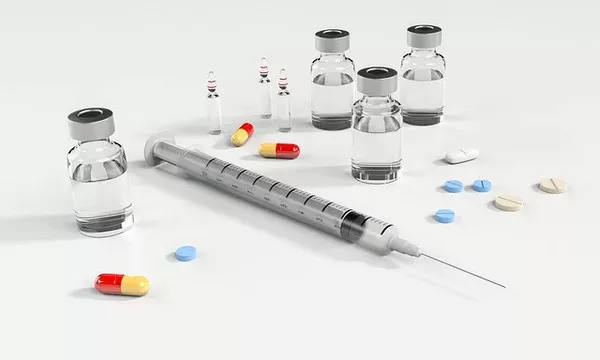Late onset diabetes, commonly referred to as type 2 diabetes, is a chronic condition characterized by insulin resistance and relative insulin deficiency. This form of diabetes typically develops in adults, often after the age of 45, although it can increasingly affect younger populations due to rising obesity rates and sedentary lifestyles. Understanding the nature, causes, symptoms, and management of late onset diabetes is crucial for effective prevention and treatment.
The Mechanism of Late Onset Diabetes
Insulin Resistance
In type 2 diabetes, the body’s cells become resistant to insulin, a hormone crucial for regulating blood glucose levels. Insulin resistance leads to increased blood glucose levels, as the body struggles to utilize insulin effectively. Over time, this resistance can cause the pancreas to work harder to produce more insulin, which can eventually lead to pancreatic beta-cell dysfunction.
Relative Insulin Deficiency
As type 2 diabetes progresses, the pancreas may not produce enough insulin to overcome the increased insulin resistance. This relative insulin deficiency exacerbates hyperglycemia (high blood sugar levels) and contributes to the complications associated with diabetes.
Risk Factors for Late Onset Diabetes
Obesity and Overweight
One of the most significant risk factors for developing late onset diabetes is obesity. Excess body fat, particularly visceral fat surrounding the abdomen, is strongly associated with insulin resistance. The World Health Organization (WHO) identifies overweight and obesity as leading risk factors for type 2 diabetes.
Sedentary Lifestyle
A lack of physical activity is another critical contributor to the development of late onset diabetes. Regular exercise helps maintain healthy body weight, improves insulin sensitivity, and regulates blood glucose levels.
Age and Family History
Age is a notable risk factor for late onset diabetes, with increased incidence rates in individuals over 45 years old. Additionally, a family history of diabetes significantly increases an individual’s risk, indicating a genetic predisposition to the condition.
Ethnicity
Certain ethnic groups, including African Americans, Hispanic Americans, Native Americans, and some Asian Americans, are at a higher risk of developing type 2 diabetes. This increased susceptibility is likely due to a combination of genetic, environmental, and lifestyle factors.
Other Medical Conditions
Individuals with certain medical conditions, such as hypertension (high blood pressure) or dyslipidemia (abnormal lipid levels), are at an increased risk for developing late onset diabetes. Conditions such as polycystic ovary syndrome (PCOS) also raise the likelihood of developing insulin resistance and subsequent diabetes.
Symptoms of Late Onset Diabetes
Recognizing the symptoms of late onset diabetes is essential for early diagnosis and intervention. Symptoms may develop gradually and can often go unnoticed initially.
Increased Thirst and Frequent Urination
One of the hallmark symptoms of diabetes is polydipsia (increased thirst) and polyuria (increased urination). As blood glucose levels rise, the kidneys work harder to filter and excrete the excess glucose, leading to increased urination and subsequent dehydration.
Fatigue
Individuals with late onset diabetes often experience fatigue or lack of energy. This fatigue may result from the body’s inability to effectively utilize glucose for energy due to insulin resistance.
Blurred Vision
High blood glucose levels can lead to changes in fluid levels in the eyes, affecting vision and causing blurred or distorted eyesight. This symptom often resolves as blood sugar levels normalize.
Slow Healing of Cuts and Wounds
Diabetes can impair blood circulation and affect the body’s ability to heal wounds. Individuals with late onset diabetes may notice that minor cuts or infections take longer to heal than usual.
Increased Hunger
Despite eating adequately, individuals with late onset diabetes may feel an increased sense of hunger (polyphagia). This occurs because the body’s cells are not receiving enough glucose for energy, prompting increased food intake.
Complications of Late Onset Diabetes
Late onset diabetes can lead to various short-term and long-term complications if not effectively managed. Understanding these complications emphasizes the importance of early detection and ongoing management.
Cardiovascular Disease
Individuals with type 2 diabetes are at a significantly higher risk of developing cardiovascular diseases, including heart attack and stroke. High blood sugar levels can damage blood vessels and nerves that control the heart, leading to various cardiovascular complications.
Neuropathy
Diabetic neuropathy is a common complication of late onset diabetes characterized by nerve damage. This condition can lead to pain, tingling, and loss of sensation in the extremities. Neuropathy can affect various nerves throughout the body, leading to complications beyond the extremities.
Nephropathy
Diabetic nephropathy refers to kidney damage resulting from prolonged high blood sugar levels. This condition can progress to chronic kidney disease and ultimately lead to kidney failure if not managed appropriately.
Retinopathy
Diabetic retinopathy is a condition that affects the eyes and can lead to vision loss. Prolonged high blood sugar levels can damage the blood vessels in the retina, leading to vision problems and increased risk of blindness.
Foot Complications
Individuals with late onset diabetes are at increased risk for foot complications due to nerve damage and reduced blood flow. This can lead to infections, ulcers, and in severe cases, amputations if not addressed promptly.
Diagnosis of Late Onset Diabetes
Early diagnosis of late onset diabetes is critical for effective management and prevention of complications. Several diagnostic tests can help identify the presence of diabetes.
Fasting Plasma Glucose Test
The fasting plasma glucose (FPG) test measures blood sugar levels after fasting for at least eight hours. A fasting glucose level of 126 mg/dL (7.0 mmol/L) or higher indicates diabetes.
Oral Glucose Tolerance Test
The oral glucose tolerance test (OGTT) involves measuring blood sugar levels two hours after consuming a sugary drink. A two-hour glucose level of 200 mg/dL (11.1 mmol/L) or higher indicates diabetes.
Hemoglobin A1c Test
The hemoglobin A1c (HbA1c) test measures average blood sugar levels over the past two to three months. An HbA1c level of 6.5% (48 mmol/mol) or higher is indicative of diabetes.
Random Plasma Glucose Test
A random plasma glucose test measures blood sugar levels at any time, regardless of fasting. A random glucose level of 200 mg/dL (11.1 mmol/L) or higher suggests diabetes, particularly in the presence of classic symptoms.
Management and Treatment of Late Onset Diabetes
Effective management of late onset diabetes involves a comprehensive approach, including lifestyle modifications, medication, and regular monitoring.
Lifestyle Modifications
Diet and Nutrition
A balanced diet is crucial in managing late onset diabetes. Focus on whole foods, including vegetables, whole grains, lean proteins, and healthy fats. Limiting processed foods, sugary snacks, and high-calorie beverages is essential for maintaining optimal blood sugar levels.
Weight Management
Achieving and maintaining a healthy weight can significantly improve insulin sensitivity and help manage blood glucose levels. Weight loss, even as little as 5-10% of body weight, can lead to substantial improvements in diabetes management.
Physical Activity
Regular physical activity is vital for managing late onset diabetes. Aim for at least 150 minutes of moderate-intensity aerobic exercise each week, combined with strength training exercises at least twice a week. Physical activity improves insulin sensitivity and aids in weight management.
Medication Management
Oral Medications
Several classes of oral medications can help manage blood glucose levels in individuals with late onset diabetes. Common medications include:
Metformin: Often the first-line treatment for type 2 diabetes, metformin improves insulin sensitivity and decreases hepatic glucose production.
Sulfonylureas: These medications stimulate the pancreas to produce more insulin, helping lower blood sugar levels.
DPP-4 Inhibitors: These drugs enhance incretin hormones, increasing insulin production and decreasing glucagon secretion.
SGLT2 Inhibitors: These medications promote glucose excretion through urine, lowering blood sugar levels and providing additional cardiovascular benefits.
Insulin Therapy
In some cases, individuals with late onset diabetes may require insulin therapy, particularly if oral medications are insufficient to control blood glucose levels. Insulin therapy involves administering insulin via injections or an insulin pump to maintain stable blood sugar levels.
Regular Monitoring
Regular monitoring of blood glucose levels is essential for effective management of late onset diabetes. Individuals should regularly check their blood sugar levels at home and attend regular follow-up appointments with their healthcare provider to monitor progress and make necessary adjustments to their management plan.
Preventing Late Onset Diabetes
Preventing late onset diabetes is crucial, especially for individuals at high risk. Implementing lifestyle changes early can significantly reduce the risk of developing diabetes.
Risk Factor Awareness
Understanding personal risk factors for late onset diabetes, such as family history, age, and obesity, can help individuals take proactive steps to reduce their risk.
Regular Screening
Regular screening for diabetes, particularly for high-risk individuals, is vital. Early detection allows for timely intervention and management, reducing the risk of developing complications.
Healthy Lifestyle Choices
Making healthy lifestyle choices, such as adopting a balanced diet, engaging in regular physical activity, and maintaining a healthy weight, is essential in preventing late onset diabetes.
See also: What Can I Take to Reduce Sugar in My Body?
Conclusion
Late onset diabetes is a prevalent and serious health condition that requires careful management and prevention strategies. Understanding its mechanisms, risk factors, symptoms, and complications is vital for individuals and healthcare providers alike. By implementing lifestyle modifications, adhering to medication regimens, and maintaining regular monitoring, individuals can effectively manage their diabetes and reduce the risk of complications. Early detection and intervention are crucial for improving outcomes and promoting a healthier future.
Related topics:
What is Diabetes: Definition and Types


























